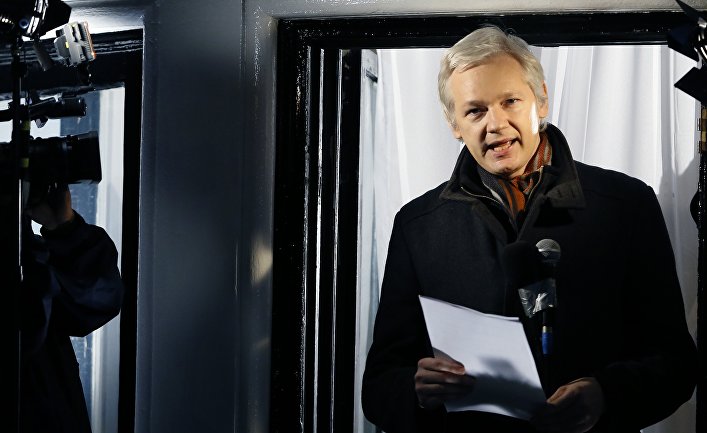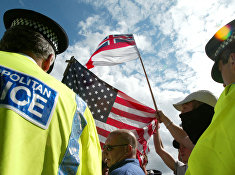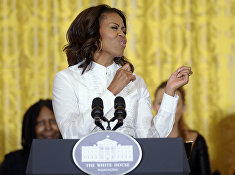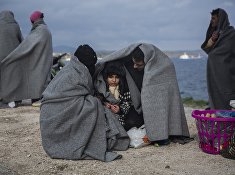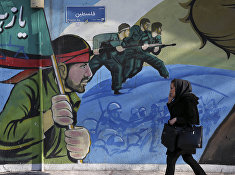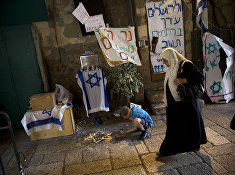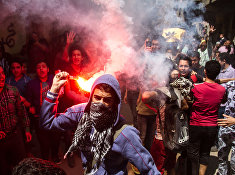In a recent interview, Julian Assange referred to the document added recently to the archive of WikiLeaks, from among a handful of documents of Bradley Manning. Document dating back to December 2006, talks in detail about US's scheme to destabilize Syria with a goal to overthrow Bashar al-Assad's government.
One does not bother to actually replace a regime by another, but the US administration, just like the Saudi, never replaces a regime by a better one.
Here is an example, the regime of Abd Rabbuh Mansur Hadi in Yemen, was established by the Gulf States in cooperation with the US ally after being fed up byAli Abdullah Saleh (President of Yemen from 1990 to 2012.) The document may act as an antidote to a widespread tendency in Arab culture to mock conspiracy theories, just to diminish the bad influence of the direct US and Israeli interference in the affairs of each and every Arab state.
The irony of the conspiracy theory coincided with the rise of Sadat era (Muhammad Anwar El Sadat 3rd president of Egypt 1970-1981)the era of the Saudi kingdom after the death of Sadat's predecessor, Gamal Abdel Nasser. That was one of the essential tools in the collaboration of Ashraf Marwan, an alleged double agent during the 1973 war with Israel,and Kamal Adham, Saudi intelligence chief during King Faysal's reign. It emerges either as a result of naivety and stupidity understanding international relations, or out of cunningness. It is true that some ludicrous conspiracy theories exist — the media is abundant with such things as Zionism and Freemasonry to Falafel sellers in allies – but still there are documented conspiracies.
Dumbfounded, Julian Assange sent the above-mentioned document to his fellow Glen Greenwood. The document starts with the expression of the US's annoyance with the stability of Syrian regime and that Bashar al-Assad is “stronger than two years ago”. This is a smart observation, especially as it comes after three years of Iraq invasion. Planning to occupy Iraq, the US directed its efforts to demolish both Syrian and Iranian regimes, as a double bonus for Israel. Selling the idea of invasion to the democratic congress members, the US administration, marketed the plan as it will take down two regimes in addition to that of Iraq. This promise was one of the reasons for a strong democratic support of the invasion – 73 % of Americans approved invasion of Iraq, whereas 92% supported invasion of Afghanistan. Anti-invasion movements in the US were too faint and modest, especially as it came in the wake of September 11th terrorist attack, which convinced US citizens that global crusades are indispensable shortcuts to internal security. 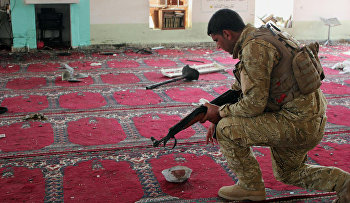
The document, sent from US Embassy in Damascus, mentioned that the stability of Syrian regime worried US administration. Thus, vulnerabilities in Syria and available “opportunities” should be utilized to put Bashar al-Assad under pressure (but only under pressure not to overthrow the regime). It calls for actions to make him paranoid, regardless of the safety and security of the Syrian people.
Assassination of Rafic al-Hariri and the trial that followed was the first factor to be used against Assad. The document revealed how the report by German investigator Detlev Mehlis would be used to the advantage of the US plans, by creating “serious tension” within the close circle of Assad and would cause him to react “irrationally.” But the real danger of this plan is fueling the sectarian conflict between Sunnis and Shiites in Syria.
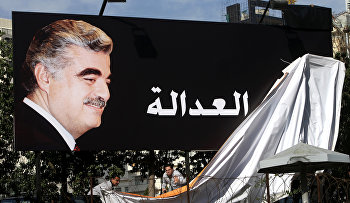
This document (classified as confidential) is not an illusion of opposition media; the plan is not unofficial. It’s a telegram sent to different US government bodies (including White House, Department of State, Department of Treasury, US Central Command) and the Arab League. This article reveals how American government works in the Arab region: The US administration relies on Arab regimes just as tools and not allies, like Israel. They are quite sure that Oil States media promotes what US government dictates to the US and Israeli advantage. Potentially US media center in Dubai is the most crucial site of decision-making in the Arab media. This is a reference to the context of US invasion of Iraq in 2003, where long and sudden essays were published about the tyranny and injustice of Saddam Hussein's regime, which was meant to establish Arab public opinion to accept US war in Iraq. One can see the results of the American plan in the Arab media, which in the years following the release of this document, was full of essays about Shiite expansion, allowing Jordanian king (controlled by US Ambassador) to mention the term “Shiite crescent” as to color the sectarian struggle with local and Arab flavor. It was said in the paragraph related to fostering tensions among factions: “Play on Sunni Fears of Iranian Influence: There are fears in Syria that the Iranians are active in both Shia proselytizing and conversion of, mostly poor, Sunnis. Though often exaggerated, such fears reflect an element of the Sunni community in Syria that is increasingly upset by and focused on the spread of Iranian influence in their country through activities ranging from mosque construction to business. Both the local Egyptian and Saudi missions here, (as well as prominent Syrian Sunni religious leaders), are giving increasing attention to the matter and we should coordinate more closely with their governments on ways to better publicize and focus regional attention on the issue.”
US embassy Tel Aviv was in on #Syria destabilization plan https://t.co/Yqixc7PCSN
— WikiLeaks (@wikileaks) September 18, 2015
Sectarian tendency towards the document is evident when it mentioned “the big fear” of Alawites of the majority rule of the Sunnis in Syria. The document fosters this fear. Tracing the events in the Arab world since 2006, it is evident that motivating sectarian struggle was the key, especially given the circumstances of Hariri’s assassination, as an integral part of the plan, in order to foster sectarian impulses to be stronger than non-sectarian political identity.

Part of the document talks about Abdul Halim Khaddam, former Vice President of Syria and one of the few Sunni Muslims to make it to the top of the Alawite-dominated Syrian leadership. The report his lack of public appeal but his media presence bothers governing elite and Bashar al-Assad himself. Thus the document advises “encouraging Saudis and others to allow Khaddam a media presence to scandalize the regime.” This demonstrates the Saudi media’s abidance to the US's demands. A diplomat in the US embassy can determine the type of guests hosted by Saudi stations.
Even rumors and gossip have their share in the US plan. An example is the split in Military-Intelligence staff. It’s a must, according to the plan, to “foster rumors and refer to foreign conspiracies” as “the regime is very sensitive to rumors about possible coups and restlessness among military and security forces”. Regional allies, such as Saudi Arabia and Egypt, have to be motivated to meet persons like Khaddamand Mohammed Refaat El-Saeed (Egyptial politicain and scholar)means to send signals of this kind, leak out these meetings after they take place. Abdel Nasser was not exaggerating when he said, after 1967 war, that the enemy spread rumors and sarcastic remarks to cultivate defeat trauma on the streets of Egyptian.
The document suggests focusing on failure of economic reform plans, publicly praised by the US administration, especially in the period preceding presidential elections to embarrass Assad and deprive him of his legitimacy. Comparison should be drawn between a failed reform in Syria and the success of reform plans in Egypt and Tunisia, before the revolt of people against these regimes, previously praised by the US. It also calls for the Gulf States to dissuade from investing in Syria. Impoverishing Syria was part of the US plan.
Concerning the Kurdish case, the document suggests that Kurds have to complain publicly against the lack of human rights to agitate the regime. But the Americans seemed to be conservative with the Kurdish case as this may “counteract efforts to unite opposition.” This early effort to prepare opposition forces by US administration suggests bad intentions against the Syrian people.
In the paragraph related to jihad terrorist movements, US government confesses secretly that Syrian regime “works against guerrillas connected to Al-Qaeda”, but it yearns for terrorist acts in Syria itself. The US public policy suggests declaring a corridor of terrorist guerrillas in Syria not confined to Hamas or Islamic Jihad. It sees that talking about Syrian efforts against terrorist groups should be in a way that demonstrates “weakness of the Syrian government and signs of its instability” as well as consequences of its policies.
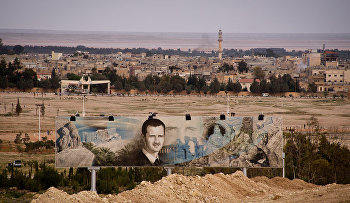
The document reaches a conclusion contradicting the US public policy, as it refers to the difficulty to get “a precise description of the threat caused by anti-regime islamists in Syria. Sure there is a long term threat.” Though it emphasized Assad’s stronghold at that time, it also urged to “utilize vulnerabilities” in order to create “opportunities to shake decision-making process in Syria and keep Bashar al-Assad in a state of paranoia. He has to pay for his mistakes.”
Nothing helps to understand what happened in Syria in the recent years as this document. It fosters the idea that although the US might not be directly responsible for the emergence of opposition in Syria, it is to a great extent responsible for the deterioration in Syria, transforming a political question into a devastating war between the regime and armed guerrillas, supported, armed, and financed by the Gulf and Western States. Communalism and Sectarianism is not necessarily the creation of the US administration but it did fire it up.
The document is stained by the Syrian blood at a time when John Kerry and the rest of the US officials shed tears of compassion for the Syrian refugees. Meanwhile the number of Syrian refugees who got asylum in the US never reached a number of emigrants who came from one single Lebanese village.
